He underwent amputation at age 2. Today, nothing holds him back.
NEW HAMPSHIRE – When 3-year-old Thomas "TJ" DeAngelo got to personalize his new running prosthesis, he picked an image of Lightning McQueen, the gregarious racecar from the “Cars” movie franchise.
It’s fitting for the little boy, who hums toy cars across linoleum floors and runs after them with fearless speed. He's quiet, shy, his mom says, but his movement does the talking — he's curious and confident.
During a recent appointment at Next Step Bionics and Prosthetics' Manchester, New Hampshire location, TJ exhibited complete command of his prosthesis, sprinting down hallways and descending sets of stairs. His mom, Jen DeAngelo, looked on with pride.
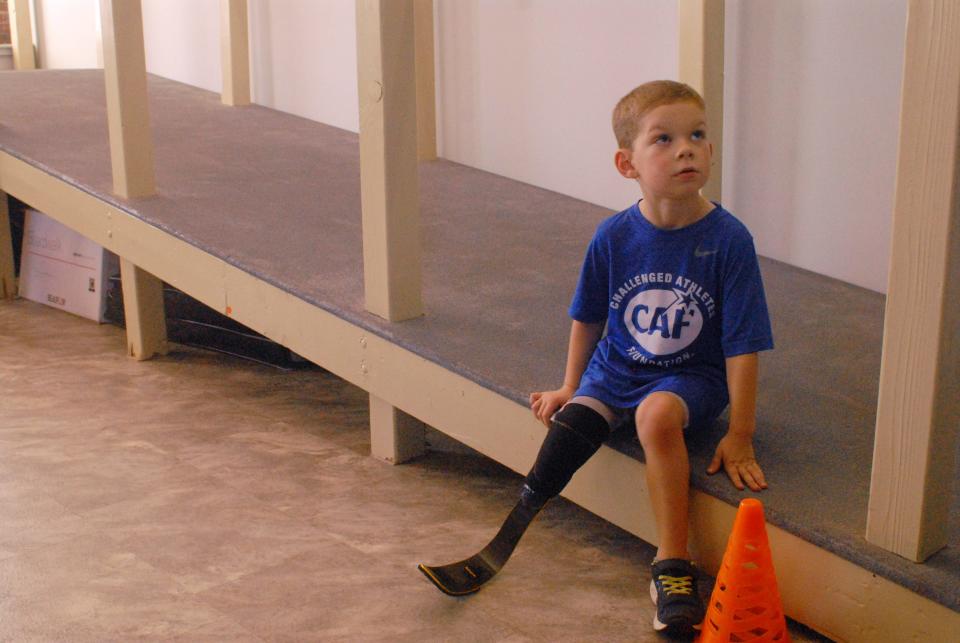
"He is the most resilient kid I’ve ever seen," she said. "He really hasn’t been held back from anything."
TJ was born with a congenital birth defect called fibular hemimelia, a rare condition that occurs in approximately 1 in 40,000 children. He was a completely healthy baby, except his right leg was missing its tibia bone — one of two bones in the lower leg.
Rhode Island: Less than six months after losing her leg, this woman can run
TJ underwent amputation around his second birthday. His parents quickly learned that many insurance companies don't fully cover the costs of a primary prosthesis — the one TJ wears daily — and most don't provide any coverage at all for specialty prostheses, like a swim leg or running blade.
Earlier this month, the Challenged Athletes Foundation granted TJ, who lives in Derry, a specialized Nike sole sports foot that he can wear for his most athletic and agile activities. If TJ's parents were footing the bill, it would have cost them between $12,000 and $15,000.
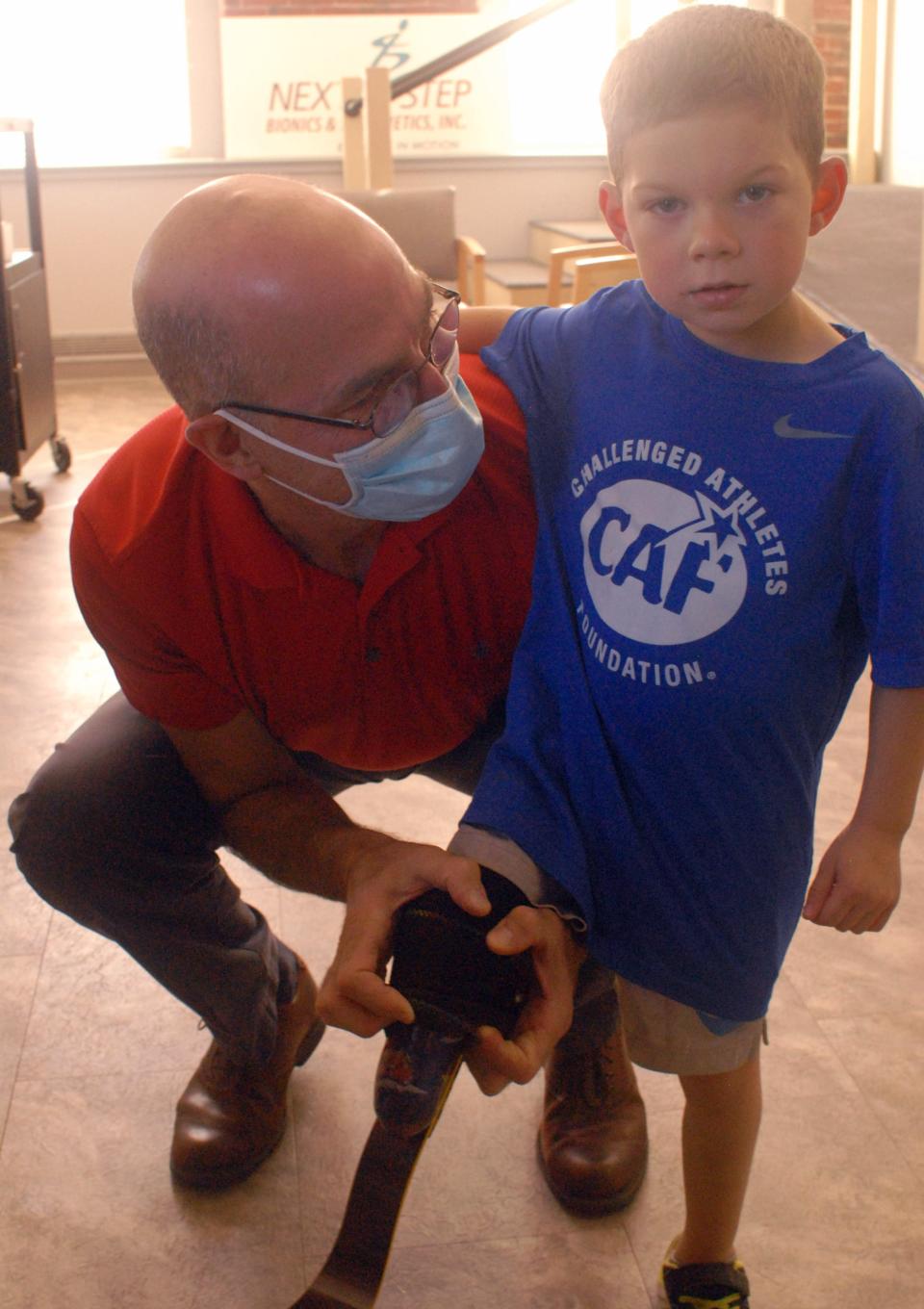
Considering more than 2 million people are currently living with limb loss in the United States, Jen DeAngelo called it "mindboggling" that most insurance companies don't pay for a primary prosthesis "100%."
According to the Amputee Coalition, a national nonprofit organization, lifetime healthcare costs for people with limb loss is $509,275, compared to $361,200 for people without limb loss.
What is fibular hemimelia?
TJ's birth defect was discovered during an ultrasound around 20 weeks when a baby's limbs are measured. His parents were referred to a specialist at Boston Children’s Hospital prior to his birth.
Fibular hemimelia can present itself as limb length discrepancy and foot, ankle and knee deformities. When TJ was born, his right leg was shorter because of the missing bone and his foot was a non-functioning mass of tissue.
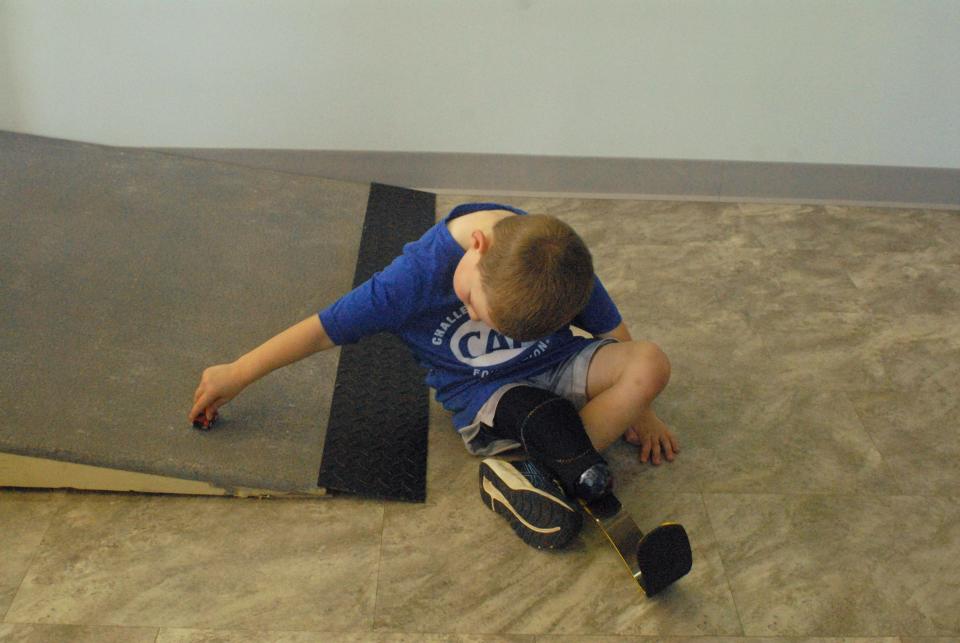
Jen said she and her husband John were told the condition is rare with "no rhyme or reason for it" and no genetic component. Boston Children's Hospital says most congenital limb differences occur with no known cause.
"We talked about the best thing for him when he got a little bit bigger would be to amputate so a prosthetic would fit him," said Jen.
World's first amputation: How a missing foot in Borneo is upending what we've known about human history
TJ underwent a Syme amputation below his knee around his second birthday. In this particular type of amputation, the foot is removed but the heel pad is preserved and strapped to the remaining leg.
Being a toddler with limb difference
TJ is just like any other kid, said Jen DeAngelo, and he has "adapted tremendously and figured out what works well for him."
Of course there are small things he and his family will have to figure out as he gets older. Right now, Jen laughed, they're trying to navigate nighttime potty-training, as TJ doesn't sleep with a prosthesis on.
Will to walk: A young girl's journey with cerebral palsy
He just started preschool this year, the first time he's been out on his own navigating the world and social settings. He's playing soccer, and over the summer participated in a running program, which brings Jen, a competitive runner in college, great joy.
"His teachers this year asked if he needs any special accommodations," said Jen. "He’s completely able-bodied and can do everything."
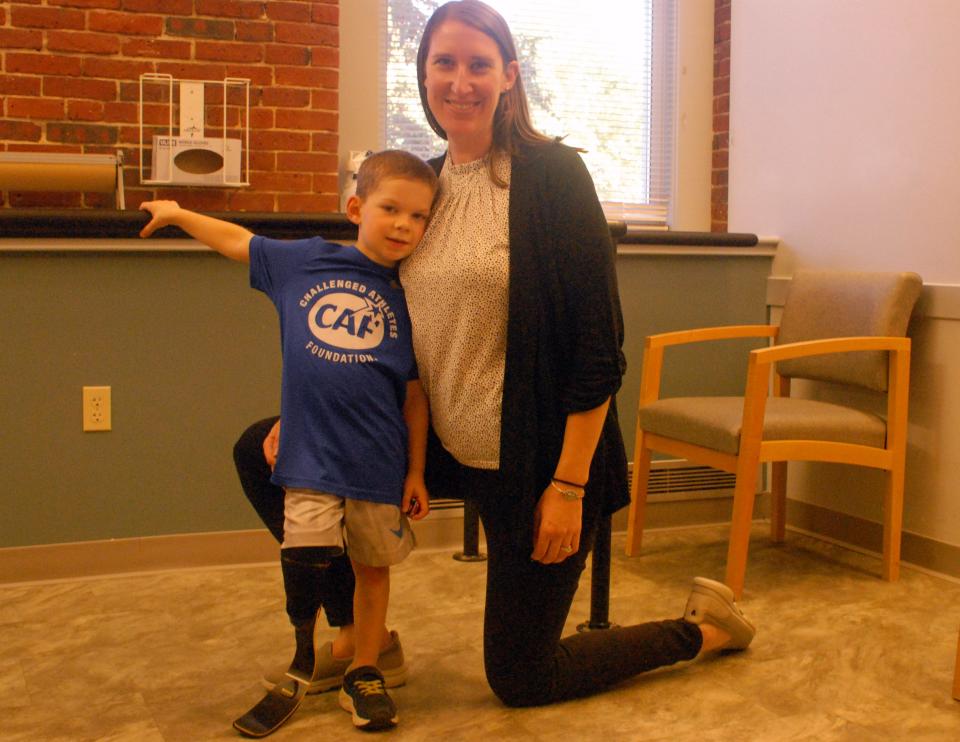
TJ said his favorite color is red, and that he loves toy cars and trucks. This year for Halloween, he'll dress up as a firefighter.
Scott Cummings, TJ's prosthetist at Next Step Bionics and Prosthetics, said young children who experience amputation in their toddler years may not even recognize themselves as a person with limb difference, because that's all they know.
"He just gets up and goes," said Cummings. "In my experience with young children, they don’t know any different. Children tend to be able to adapt more readily than someone who is older."
Jen echoed that sentiment, saying kids are "way more invincible than any adult."
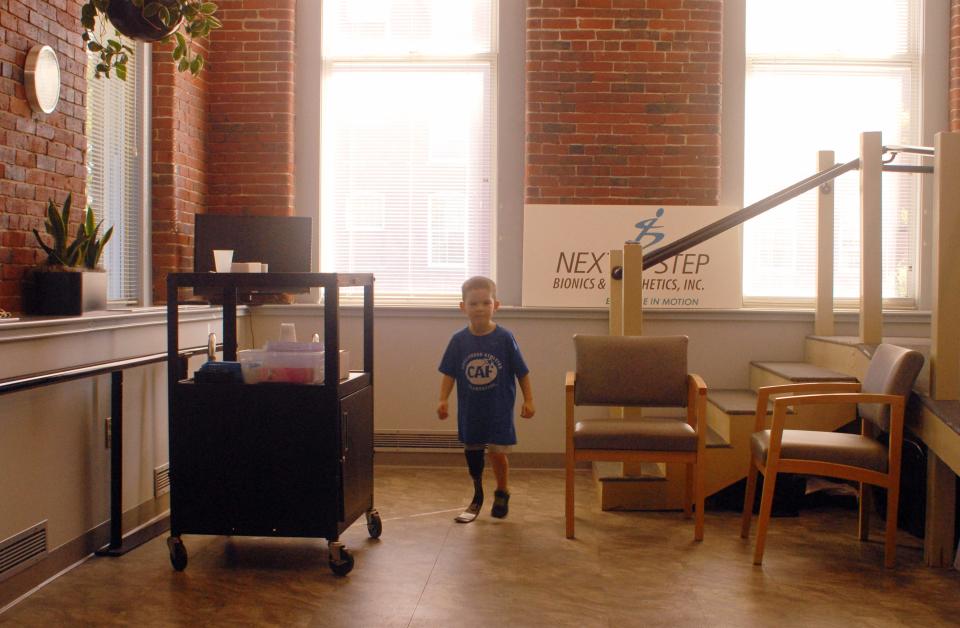
Does insurance cover prostheses?
While health insurance plans vary, most companies cover a portion of a person's primary prosthesis. But oftentimes out-of-pocket costs remain.
The cost of a prosthetic leg can range anywhere from $5,000 to $50,000. Jen DeAngelo said they paid somewhere between 20-30% out-of-pocket for TJ's primary prosthesis that he wears daily: around $2,000.
For young children like TJ, some may require more than one new prosthesis per year during their peak growing years, said Cummings, leading to hefty costs for families.
"If we were in a place we couldn’t afford one … are you just not going to give your child that prosthetic?" Jen DeAngelo said.
Private insurance companies have varying policies on prostheses. Medicaid recipients pay 20% of the Medicare-approved amount for their primary prosthetic device, but only if their doctor and supplier are enrolled in the program.
Insurance companies do not offer coverage for what they deem to be additional prostheses that aren't medically necessary — artificial limbs that allow people to play and compete in cycling, track and field and countless other physical activities.
"Insurance considers those pieces of equipment luxury items," said Lauren Gerrbi, senior programs manager at the Challenged Athletes Foundation.
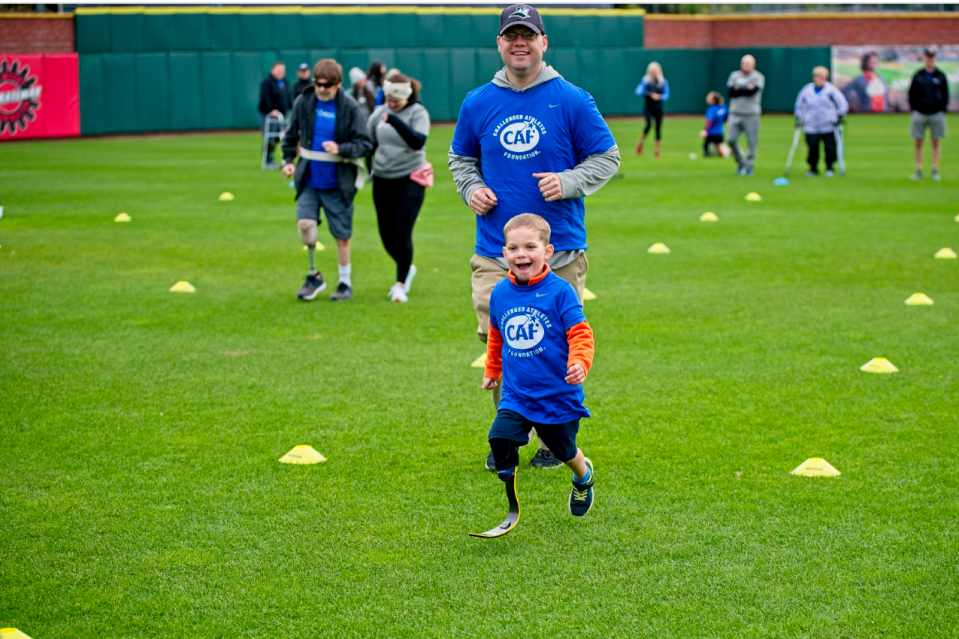
She called specialized prostheses "inherent to everyday life" in order to give people with limb loss the same access to sports and fitness opportunities.
"Not only is something like a running prosthesis not covered by insurance, but (any kind of equipment adaptation)," Gerrbi said. "A basketball wheelchair, a hand cycle. A hand cycle could cost anywhere from $3,000-$5,000. That's a big out-of-pocket expense."
The Challenged Athletes Foundation has annual grant programs — like the one that recently awarded TJ his Nike sports foot — where people can apply for funding towards a prosthesis, piece of athletic equipment, or even a gym membership.
"It really is life-changing," Gerrbi said of the grants they're able to give.
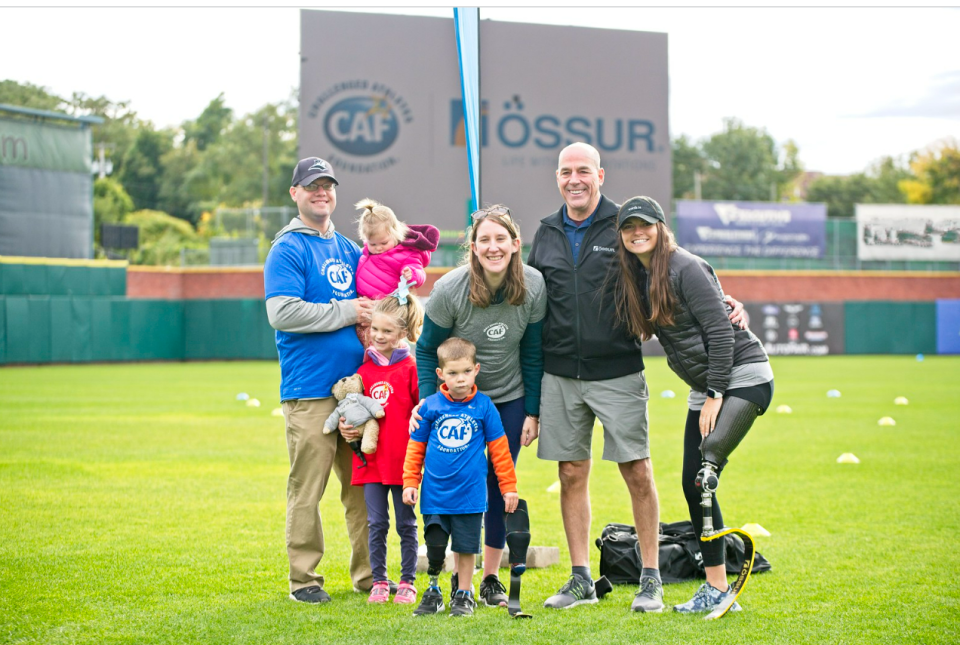
TJ was presented with his new Nike foot during an Oct. 2 mobility clinic at Delta Dental Stadium in Manchester, featuring New England para-athletes Noelle Lambert and Femita Ayanbeku.
Inspirational: Two years after losing four limbs, man finishes fun run race
Like the Challenge Athletes Foundation, the Heather Abbott Foundation provides customized prostheses to those who have suffered limb loss through traumatic circumstances.
The Newport, Rhode Island-based organization was founded in 2014 by Boston Marathon bombing survivor Heather Abbott, who lost one of her legs and in her own journey realized "the steep price of a customized prosthetic device alone is too great a hurdle to overcome."
After marathon bombing, Heather Abbott is using her loss to help others
More: 8-year-old receives special prosthesis from Heather Abbott Foundation
Abbott's website notes that specialty prostheses can range from $15,000 to more than $100,000.
This article originally appeared on USA TODAY NETWORK: NH toddler gets special prosthesis from Challenged Athletes Foundation

